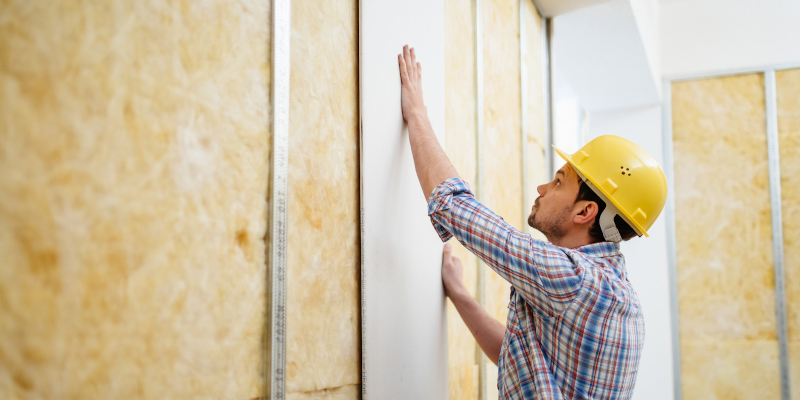Efficient Drywall Repair Techniques to Restore Your Wall surfaces
Efficient Drywall Repair Techniques to Restore Your Wall surfaces
Blog Article
Drywall Installation Facilitated: Tips for Perfect Outcomes
Drywall setup is commonly perceived as an overwhelming task, yet with the best method and knowledge, it can come to be a convenient undertaking. Grasping techniques for reducing, hanging, and completing drywall can dramatically affect the result.
Choosing the Right Products
Choosing the appropriate materials for drywall installment is essential to attaining a long lasting and aesthetically pleasing surface. drywall installation. The main element, drywall sheets, usually come in numerous thicknesses, with 1/2-inch sheets being conventional for interior wall surfaces. For locations requiring extra dampness resistance, such as restrooms or kitchen areas, take into consideration using green board or cement board, which are specifically designed to stand up to moisture

Additionally, choosing the appropriate fasteners-- either nails or screws-- is essential for protecting the drywall to the framing. Drywall screws are typically preferred for their holding power and minimized threat of popping. Lastly, take into consideration the complements such as guide and paint, which not only boost the appearance yet additionally safeguard the drywall from dampness and wear.
Preparing the Installment Area
Before beginning the drywall setup process, it is vital to prepare the installation area completely. A tidy workspace decreases the danger of damage to existing things and allows for effective motion during installment.
Following, examine the walls and ceiling for any type of blemishes, such as splits, holes, or mold. Address these problems beforehand; patch any type of problems and enable sufficient time for fixings to dry. In addition, make certain that electric outlets, buttons, and plumbing are correctly placed and accounted for, as this will certainly impact drywall positioning.
Take into consideration the environmental conditions also. A secure temperature level and moisture degree are crucial for ideal bond and performance of the drywall materials. If essential, use a dehumidifier or heater to develop ideal conditions.
Cutting and Hanging Drywall
The secret to effective drywall installation lies in the accurate cutting and dangling of the panels. Make use of a straight edge and an energy knife to rack up the drywall along your dimensions, after that snap it along the racked up line for a clean break.

Constantly work from the top down and delegated right, making certain that you preserve a staggered pattern to improve stability. Properly hanging the drywall establishes the structure for a smooth coating, inevitably leading to remarkable outcomes in your drywall project.
Insulation and Mudding Strategies
While correct cutting and hanging of drywall establishes the phase, the following crucial step entails understanding taping and mudding strategies to guarantee a seamless coating. Taping is necessary for strengthening joints and stopping fractures; it includes installing tape into the applied joint compound why not find out more (mud) Start with a quality fiberglass or paper tape, using the tape over the joint and check my source pressing it into the wet mud making use of a taping knife, ensuring no air bubbles continue to be.
As soon as the tape is in location, use a thin layer of joint compound over the tape, feathering the sides to develop a smooth change to the drywall surface area. Enable this layer to dry completely before sanding it lightly to get rid of imperfections. Repeat this process, applying extra layers of mud as needed-- generally 2 to 3 layers-- while slowly broadening the application area with each layer to accomplish a smooth look.
After the final layer dries out, sand the surface with a fine-grit sandpaper till smooth. drywall installation. Keep in mind to use a mask throughout sanding to stay clear of breathing in dirt bits. Mastering these taping and mudding methods is crucial for achieving a professional-quality finish in your drywall setup
Completing Touches for Excellence
Attaining a perfect drywall installment surpasses mudding and taping; it finishes in the completing touches that boost the total appearance. These last steps are essential in guaranteeing a professional-grade surface that boosts the visual appeals of your space.
Begin by sanding the dried joint compound to create a smooth surface area. Utilize a fine-grit sandpaper and a sanding block or pole sander for ideal control. Pay particular attention to sides and edges, as these areas tend to require even more thorough job. After sanding, clean down the wall surfaces with a damp cloth to remove any kind of dust bits, ensuring a tidy surface area for painting.
Next, apply a guide especially designed for drywall. This step is vital, as it helps seal the joint substance and provides a consistent base for the topcoat. As soon as the guide dries out, examine for any imperfections, and touch up as required.
Verdict
To conclude, successful drywall installment pivots on the cautious choice of materials, comprehensive prep work of the installation location, and accurate implementation of cutting and Discover More Here hanging methods. Mastery of taping and mudding processes is essential for achieving a smooth coating. Furthermore, focus to finishing touches, including priming and touch-ups, guarantees a professional-grade result. By sticking to these standards, the high quality of handiwork can be substantially improved, adding to the general aesthetic and capability of the area.
Drywall installment is commonly viewed as an overwhelming task, yet with the right strategy and knowledge, it can come to be a convenient endeavor.Selecting the proper materials for drywall installment is essential to achieving a durable and cosmetically pleasing surface.Prior to beginning the drywall setup process, it is essential to prepare the installment area extensively. Mastering these taping and mudding methods is critical for achieving a professional-quality coating in your drywall installation.
In final thought, effective drywall installation hinges on the mindful choice of materials, complete preparation of the installation location, and specific execution of reducing and hanging techniques.
Report this page